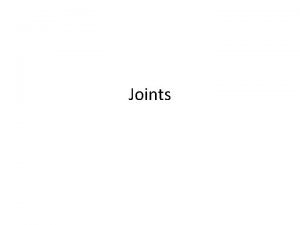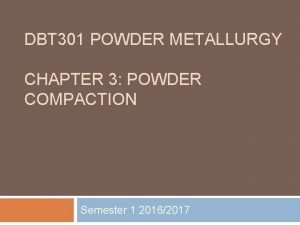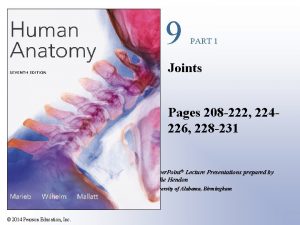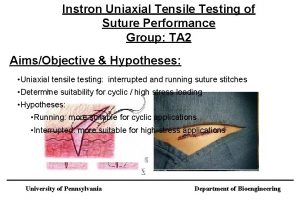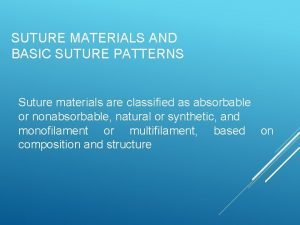Suture Performance Under Uniaxial Tensile Testing Group 101





- Slides: 5

Suture Performance Under Uniaxial Tensile Testing Group: 101 A 5 Ilan Epstein – Background & Hypothesis Neha Jha – Methods & Protocol Ameya Phadke – Deliverables & Pitfalls Lena Virasch – Equipment & Budget Department of Bioengineering

Background: Experimental Shortcomings of previous study of sutures (expt 5): • Suture failure measured by attaching free-hanging weights • Deformations measured by analysis of images of samples • Denim surrogate used; ineffective model of human skin • Led to inaccuracies and ambiguities in data collection Solution • Use the Instron 4444 to apply a uniform load to the sutured surrogate samples that ultimately causes material failure • Use silicone rubber as an effective skin surrogate material Hypothesis & Objective: Determine the relationship between elastic yield and failure strength of sutures and varying stitch density. Hypothesis: The elastic yield/failure strength of sutures will increase as more stitches are used. Department of Bioengineering Ilan Epstein

Methods & Protocol: • Obtain a 3/32” thick silicone sheet and cut 10 rectangular pieces of 1. 25 cm by approximately 4. 0 cm. • Split each sample into two by halving the length of the skin. Divide them into two sets with 5 samples in each group. • Using nylon thread, suture two interrupted stitches in 5 of the samples and four interrupted stitches in the other 5 samples. • Load the samples in the Instron 4444 Benchtop Materials Testing Machine and obtain force and displacement data for each sample to determine its failure force and elastic yield. • Plot the force-displacement curves for the samples and calculate the displacement, force, strength, and strain at the failure point, along with the average stiffness and Young's modulus. • Conduct a two-tailed, unpaired t-test with unequal variances to determine the statistical difference between 2 and 4 stitches. Department of Bioengineering Neha Jha

Proposed Deliverables/Findings: • By using an Instron 4444, resulting stress/strain curves allow for more quantifiable and objective data-the elastic yield and failure strength of the suturing arrangement can be precisely determined. • The failure strength of rubber surrogate material: 28. 44 N • Failure strength of nylon sutures in interrupted stitch pattern: Four stitch arrangement: 6. 693 N Two stitch arrangement: 3. 757 N • Sutures will rupture before surrogates; mechanical properties of sutures can be effectively studied without premature failure of surrogate material. Potential Pitfalls: • The application of force to the arrangement using the Instron may not accurately reflect the forces on a suturing of an actual wound. • The skin surrogates may be damaged by the suturing • The silicone surrogate sample may slip out of the Instron clamp. Department of Bioengineering Ameya Phadke

Equipment/Materials and Budget & Justification: Current Equipment: Instron Model 4444 Benchtop Materials Testing Machine Required for tensile testing of sutured surrogate material Supplies to Purchase: Commercial grade silicone sheet Supplier: Rubber-Cal Temperature Range: -103 F to 450 F (500 F Intermittent) Minimum Tensile: 600 psi Minimum Elongation: 300% Cost: $550. 25 for 3/32" x 36" x 10” Silicone rubber serves as a superior skin surrogate and can approximate thickness of human skin, about 2 -3 millimeters. The rubber will replace the denim surrogate originally used in the experiment to test suture durability for its greater elasticity properties and likeness to skin. The silicone will maintain constant physical properties including thickness, as compared to a surrogate of fresh animal skin, for more consistent results. Department of Bioengineering Lena Virasch


